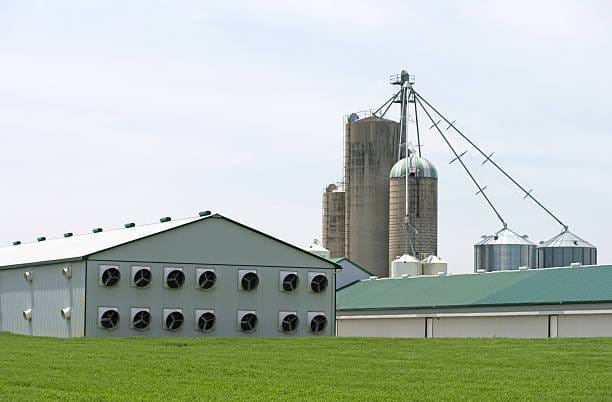
Have you ever thought about how something as simple as airflow can teach lessons about running a business?
Ventilation design in barns and buildings is all about creating balance, flow, and comfort. In the same way, businesses that focus on balance and steady systems often perform better, adapt faster, and grow stronger.
By looking at how ventilation works, leaders can find inspiration for building sustainable and productive organizations.
Why Ventilation Design Is a Smart Example
Here, barn ventilation is about more than moving air—it’s about creating a healthy environment. A well-planned system makes sure fresh air comes in, stale air goes out, and everything stays in balance. Businesses can learn from this because success also depends on balance. Just like airflow, business systems need to keep resources moving, prevent the buildup of problems, and maintain comfort for the people involved.
When air moves freely, animals and people stay healthy. When work systems flow smoothly, employees and customers thrive. Both examples show that planning and keeping systems open bring positive results.
Balance Leads to Growth
Ventilation balances temperature and humidity for comfort. In business, balance means managing time, resources, and people in a way that avoids stress. A balanced company culture helps employees feel motivated and keeps productivity steady.
Lessons Businesses Can Learn from Ventilation
Ventilation systems are designed with clear goals: comfort, health, and performance. Businesses can use the same thinking when setting up their systems.
Keep the Flow Steady
Ventilation moves air continuously. Businesses should aim for the same steady flow in communication, decision-making, and customer service. When information and tasks move smoothly, the whole system works better.
Remove the Blockages
Just as vents and fans must be kept clear to allow air circulation, businesses should remove blockages in their operations. This could mean reducing unnecessary steps in a process or solving problems quickly before they slow things down.
Adjust With the Seasons
Ventilation systems adapt to changes in weather. Businesses also need flexibility. Markets change, customer needs shift, and new challenges appear. Companies that adjust with the times, just like a ventilation system, remain comfortable and sustainable.
Building Healthy Environments
Ventilation creates spaces where animals and people feel good. In the same way, businesses must create environments where employees feel supported and customers feel valued. A healthy workplace keeps people motivated, reduces stress, and supports long-term productivity.
Comfort Improves Performance
Comfort is one of the most important factors in both farming and business life. On small farms, animals placed in barns with proper ventilation feel relaxed, breathe easily, and rest without stress. This comfort directly supports their ability to grow, stay active, and maintain steady productivity.
Farmers notice that when animals are calm and well-rested, they eat more regularly, remain healthier, and contribute positively to the farm’s overall success. Fresh air and balanced airflow create an environment that works naturally in favor of comfort and performance.
The same principle applies in workplaces. Employees who feel supported in a positive and comfortable environment are more likely to stay focused and creative.
A workspace that values people’s needs, provides balance, and reduces stress allows teams to produce better results. Comfort gives employees the mental and physical space to think clearly, solve problems effectively, and collaborate with energy.
Why Sustainable Systems Matter
Sustainability is about systems that last over time without burning out resources. Ventilation design uses natural flow and efficient equipment to keep air fresh. Businesses can do the same by using strategies that save energy, reduce waste, and support long-term goals.
Strong Foundations for the Future
Ventilation systems are built with durability in mind. Businesses also benefit from strong foundations, such as reliable processes, clear goals, and committed teams. These foundations keep performance steady and prepare the company for growth.
Tips for Applying Ventilation Lessons in Business
Just as barn ventilation is carefully managed to maintain balance and comfort, businesses can also apply simple steps to create sustainable systems that last. Airflow in a barn works best when it is steady and uncluttered, and the same principle applies to how an organization functions.
- Encourage open communication across all levels: When ideas and information move freely, there are fewer delays and more collaboration.
- Review processes regularly: Removing unnecessary steps makes operations smoother and saves both time and effort.
- Stay flexible and adaptable: Just as ventilation adjusts with the seasons, businesses should adjust to market changes, customer needs, and new opportunities.
- Create comfortable work environments: Employees thrive when they feel supported, much like animals are more productive in well-ventilated barns.
- Focus on long-term goals: Short-term wins are important, but sustainable strategies build a stronger foundation for future growth.
These small but effective steps help businesses run smoothly, maintain balance, and support both people and performance. Just as good airflow ensures barns remain healthy across generations, these practices create systems that are reliable, sustainable, and capable of supporting business success over time.
Conclusion
Ventilation design teaches an important lesson: balance, flow, and comfort create sustainable systems. Businesses that apply these ideas can improve productivity, adapt to changes, and support the well-being of employees and customers. Just as barns with good ventilation help animals thrive, companies with strong systems help people succeed. By keeping processes clear, flexible, and healthy, businesses can grow in a way that lasts.





